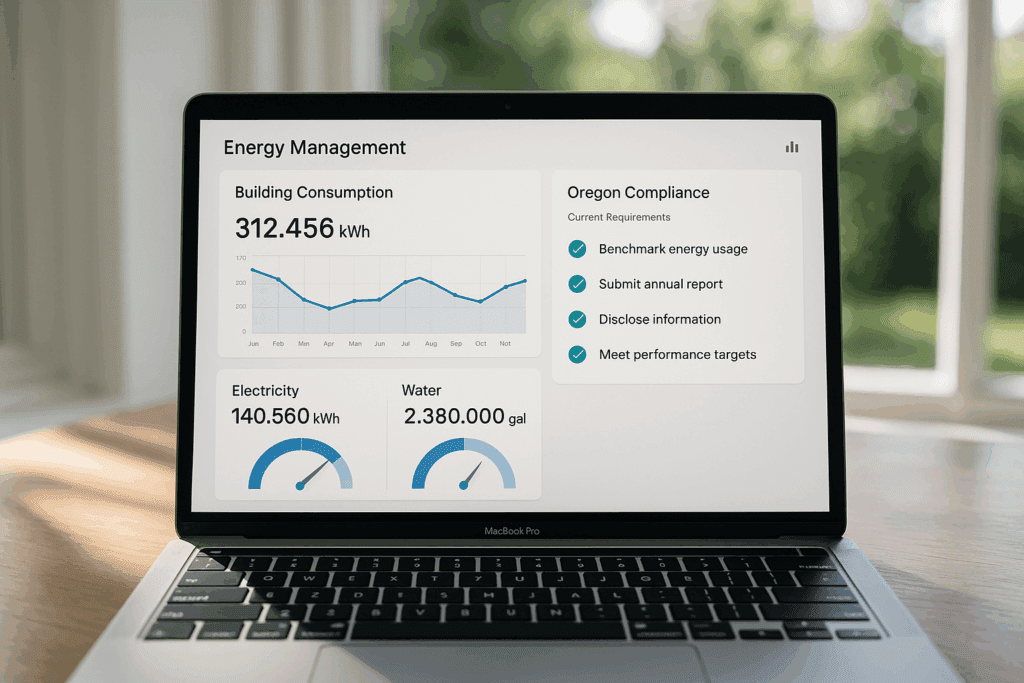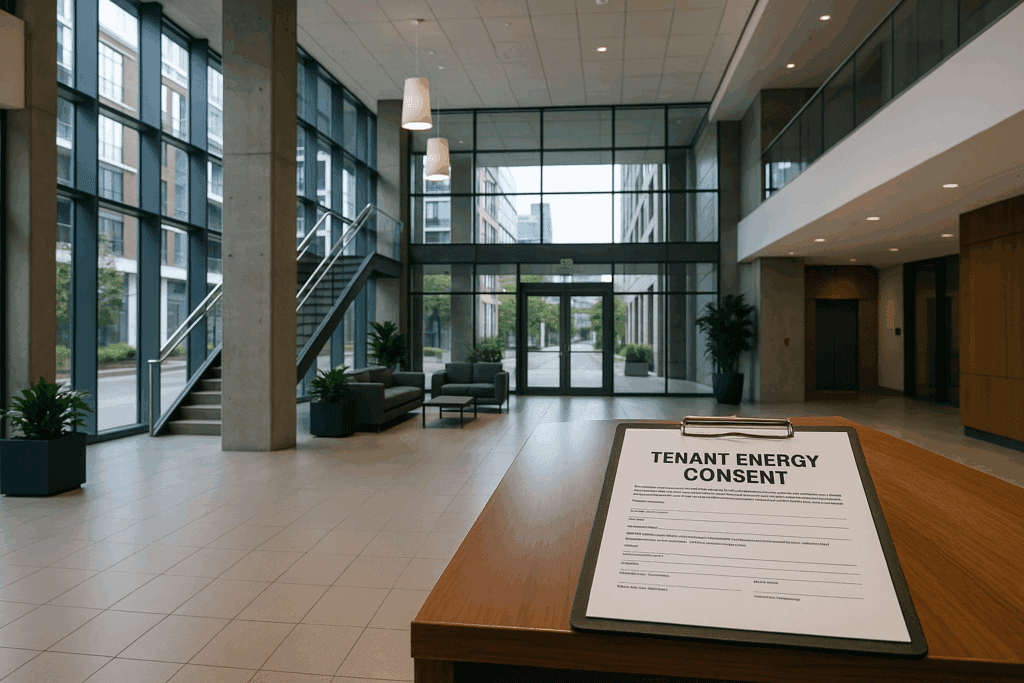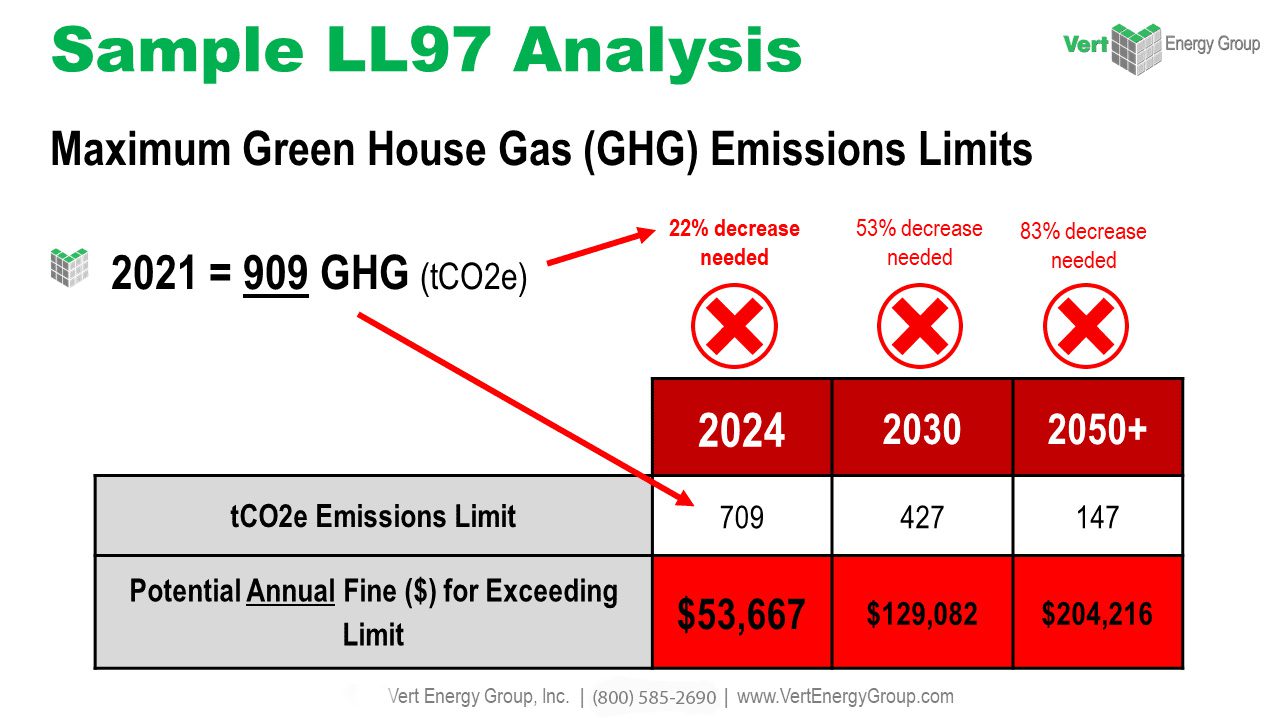If you own a building over 35,000 square feet in Oregon, your 2026 energy reporting deadline is already on the calendar.
Under the Oregon energy benchmarking rule 2026, commercial property owners across the state—especially in Portland—will be required to track and report their buildings’ energy use. This phase-in expands existing laws and introduces new Oregon benchmarking requirements for 2026, including a mandatory ENERGY STAR upload deadline for buildings hitting the 35,000 square foot trigger in Portland. If you’re still getting up to speed, you’re not alone. Many property managers are only now realizing how quickly this rule is approaching—and what it means for ongoing operations.
This post breaks down exactly what Portland, Oregon, benchmarking compliance in 2026 involves, what you need to do this year, and how to avoid missing the deadline. Whether you’re wondering who must report energy data in Oregon or trying to understand how to comply with Portland’s 2026 benchmarking law, we’ve got you covered. The good news? If you act now, you’ll be in a strong position before enforcement kicks in. Let’s walk through what the rule requires, how ENERGY STAR data gets filed, and the simple steps you can take today to stay ahead of Oregon’s building energy law.
What Does the Oregon Energy Benchmarking Rule Require in 2026?

Starting in 2026, commercial buildings 35,000 square feet and larger must begin reporting annual energy use under the Oregon energy benchmarking rule. This is part of a multi-year phase-in that aims to improve statewide building performance transparency.
In Portland, this rule aligns with local ENERGY STAR upload deadlines, meaning building owners must comply with both state and city-level requirements.
Key Compliance Requirements:
- Benchmarking through ENERGY STAR Portfolio Manager
Buildings must be enrolled in the ENERGY STAR tool, with energy usage data entered monthly. This platform tracks consumption, normalizes usage, and generates performance metrics. - 35,000 ft² Reporting Threshold
Previously exempt properties now face mandatory reporting if they exceed the 35,000 square foot trigger. That includes office buildings, warehouses, retail centers, and more. - Coordinated Oversight
Oregon DEQ oversees statewide benchmarking, while the City of Portland manages ENERGY STAR upload compliance. Owners will need to satisfy both.
What You Need to Do in 2025
Getting started in 2025 gives you the time needed to resolve data issues and meet the 2026 ENERGY STAR upload deadline without pressure. Even experienced owners should re-check building eligibility and prepare utility access in advance.
1. Confirm Your Building’s Size and Usage
Determine if your building qualifies using gross floor area, this includes all enclosed space except parking structures. Mixed-use or multi-tenant properties must report the whole building’s energy use, not just common areas.
- Review architectural plans or building permits
- Use updated BOMA calculations, if available
- Include common areas, lobbies, and service areas
2. Set Up or Update Your ENERGY STAR Portfolio Manager Account
Whether you’re creating a new account or refreshing an old one, this step is critical:
- Add basic building characteristics (address, size, occupancy)
- Set up meters for electricity, gas, and other fuels
- Input monthly utility data or link to your provider for automated uploads
- Assign team members or consultants to help maintain your account
An outdated or incomplete account may result in rejection when you file with the city or state.
3. Collect 12 Months of Energy Usage Data
You’ll need data for all of 2025 to file in 2026. Don’t wait until the end of the year—many utilities require time to process backdated or bulk data requests.
- Contact your utility’s benchmarking support team
- Consider enabling automatic data uploads for reliability
- For multi-tenant buildings, obtain signed consent where needed to access whole-building data
The sooner you request data access, the smoother your ENERGY STAR submission will be.
Filing Your ENERGY STAR Data in Portland
Portland sets its own ENERGY STAR upload deadline, often aligning with or following the state’s deadline. Missing this city requirement can lead to separate compliance notices, even if you submitted to the state.
How to Stay Compliant:
- Know the Deadline: Portland will issue a specific date for 2026 reporting, typically mid-year. Keep an eye on city announcements.
- Share Data Properly: In Portfolio Manager, you’ll need to share your building’s profile directly with the city to meet their visibility requirements.
- Double-Check Your Scores: ENERGY STAR flags missing or invalid data. Resolve those before submission to avoid rejection.
Owners managing portfolios across multiple cities should track deadlines per location to stay in compliance systemwide.
Stay Ahead of Oregon Benchmarking Requirements
Starting your compliance plan in 2025 means fewer surprises, lower stress, and better data quality. It also helps position your property as a leader in sustainability, something increasingly valued by tenants and investors.
Benefits of early action:
- Reduce the risk of fines or data errors
- Streamline future compliance cycles
- Improve ENERGY STAR scores with cleaner data
- Anticipate future energy performance requirements
You may also discover opportunities to cut costs through improved energy efficiency, once benchmarking highlights high-consumption trends.
FAQ: Portland, Oregon, Benchmarking Compliance 2026

- Who must report energy data in Oregon starting in 2026?
Commercial building owners with properties over 35,000 square feet (gross area, not including parking) must report energy use via ENERGY STAR Portfolio Manager to Oregon DEQ and, if in Portland, to the city. - What’s the difference between the state and Portland rules?
The state manages the broader energy benchmarking requirement. Portland adds an ENERGY STAR upload deadline and requires that buildings share their data profile directly with the city. - How do I know if my building hits the 35,000 square foot trigger?
Check recent permits or architectural records. If your building is close to the threshold, it’s best to measure conservatively and prepare for reporting to avoid late discovery. - What happens if I miss the ENERGY STAR upload deadline?
You may face late penalties from the city or state. More importantly, failure to comply could flag your building as non-compliant, affecting future permitting or public reporting. - What tools help automate benchmarking compliance?
ENERGY STAR Portfolio Manager offers bulk upload tools and utility integration. Some providers offer full-service benchmarking, including data collection, account management, and filing on your behalf.
Stay Ready, Stay Ahead
Oregon’s benchmarking phase-in isn’t just a future concern; it’s a present priority. If you own a commercial building over 35,000 square feet in Portland, 2026 energy reporting requirements are officially on the horizon. This post walked through exactly what you’ll need to do: confirm your square footage, prepare your ENERGY STAR Portfolio Manager account, collect your 2025 utility data, and keep tabs on the Portland ENERGY STAR upload deadline. Whether you’ve benchmarked before or this is your first go, early action is the difference between smooth filing and last-minute scrambles.
Waiting until 2026 isn’t a strategy—it’s a risk. The sooner you begin tracking energy use, the sooner you can fix gaps, avoid fines, and improve your building’s performance. More than that, staying ahead of Oregon’s building energy law shows tenants, investors, and regulators that you’re proactive, not reactive. Own a 35,000+ square foot building in Oregon? Start benchmarking now—and step confidently into compliance before the rush hits.
VertPro.com offers tools and services to help property owners and managers improve building energy efficiency and meet regulatory standards. Whether you’re looking for instant pricing on energy audits, need support with benchmark compliance, or want to explore available building upgrade options, VertPro® provides user-friendly technology solutions to simplify the process. Their platform helps ensure adherence to over 60 Energy Benchmarking and Efficiency Laws across the country.















